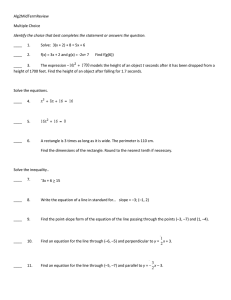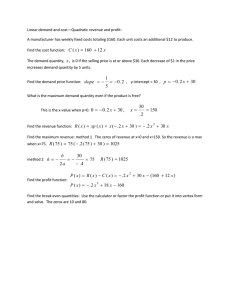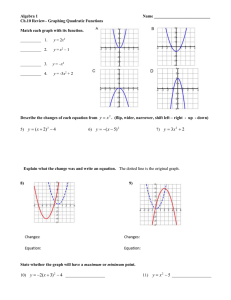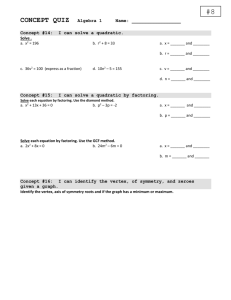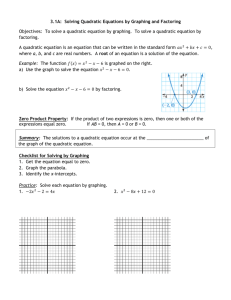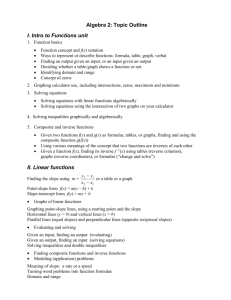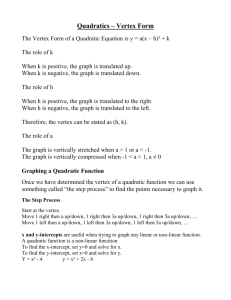LESSON 2: Maximum or Minimum of a Quadratic
advertisement
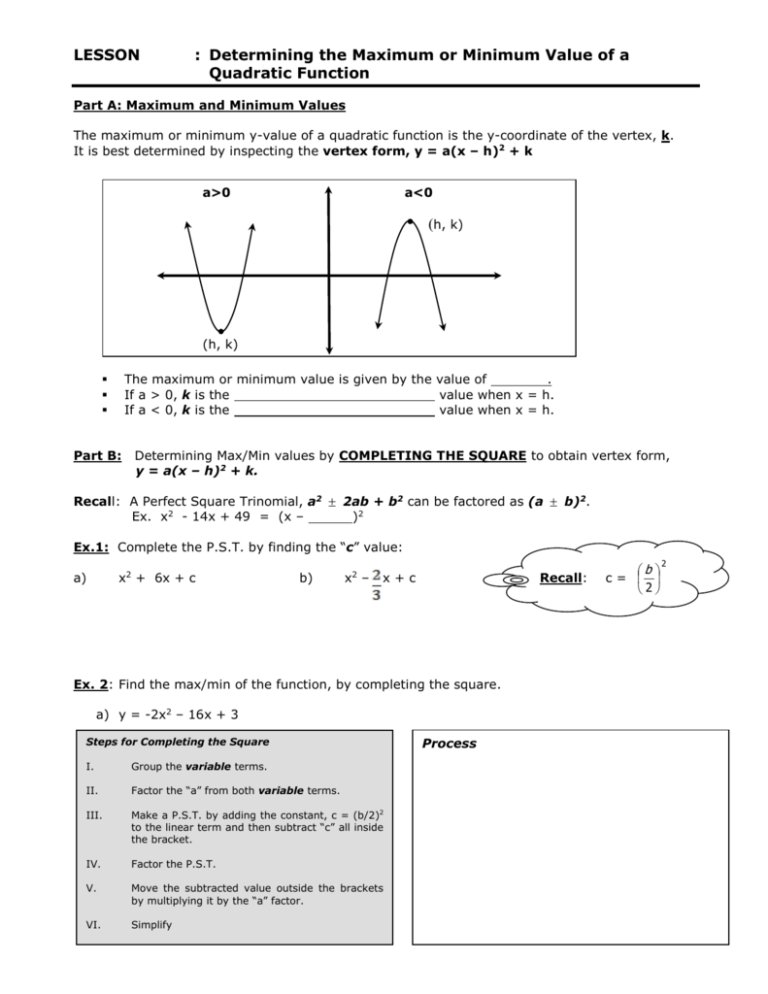
LESSON : Determining the Maximum or Minimum Value of a Quadratic Function Part A: Maximum and Minimum Values The maximum or minimum y-value of a quadratic function is the y-coordinate of the vertex, k. It is best determined by inspecting the vertex form, y = a(x – h)2 + k a>0 a<0 (h, k) (h, k) The maximum or minimum value is given by the value of . If a > 0, k is the value when x = h. If a < 0, k is the value when x = h. Part B: Determining Max/Min values by COMPLETING THE SQUARE to obtain vertex form, y = a(x – h)2 + k. Recall: A Perfect Square Trinomial, a2 2ab + b2 can be factored as (a b)2. Ex. x2 - 14x + 49 = (x – )2 Ex.1: Complete the P.S.T. by finding the “c” value: a) x + 6x + c 2 b) x – 2 x+c Recall: Ex. 2: Find the max/min of the function, by completing the square. a) y = -2x2 – 16x + 3 Steps for Completing the Square I. Group the variable terms. II. Factor the “a” from both variable terms. III. Make a P.S.T. by adding the constant, c = (b/2)2 to the linear term and then subtract “c” all inside the bracket. IV. Factor the P.S.T. V. Move the subtracted value outside the brackets by multiplying it by the “a” factor. VI. Simplify Process b c= 2 2 b) y = 4x2 – 3x Part C: Finding the max/min by FACTORING to give, y = a(x – s) (x – t) and averaging zeros. Ex. 3: Find the max/min of the function y = -5x2 + 40x + 100 by factoring to determine the zeros. The max/min is located at the vertex of the parabola. The vertex is located on the axis of symmetry, which is in the middle of the two zeros. To find the zeros, factor the quadratic. Part D: Finding the max/min by PARTIAL FACTORING of ax2 + bx to y = ax(x – b) + c a Ex. 4: Find the max/min of the function y = 2x2 -8x +5 by PARTIAL FACTORING. Factoring the linear and quadratic terms gives x-values that produce a y-value of c, the y-intercept. x =0 will work and so will x = b/a. These points are reflections of each other in the axis of symmetry. HW: p. 153 #1-3, 4 acdef

